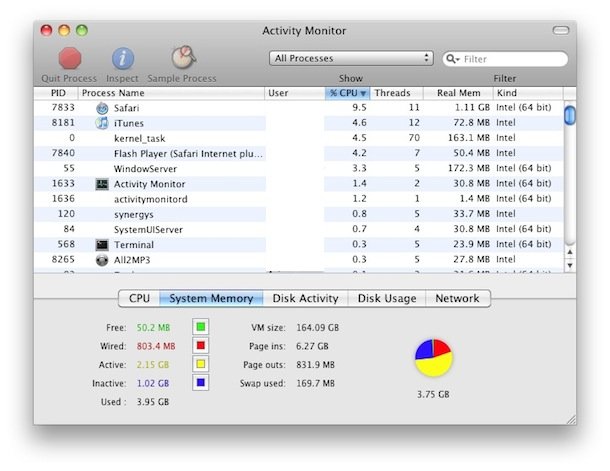

Customizing TabsĬhange the terminal's name, icon, and tab color via the right-click context menu or by triggering the following commands: Command Unsplit a split terminal by triggering the Terminal: Unsplit Terminal command through the Command Palette or in the right-click context menu. Dragging a tab into the main terminal area allows joining a group. Navigate between terminals in a group by focusing the previous pane, ⌥⌘← (Windows, Linux Alt+Left), and focusing the next pane, ⌥⌘→ (Windows, Linux Alt+Right).ĭragging and dropping tabs in the list will rearrange them.

There's a dedicated troubleshooting guide to help you with these sorts of problems.
#Mac task manager kill process terminal code#
Note: If you're having trouble launching your preferred shell in the integrated terminal, it may be due to your shell's configuration or a VS Code terminal setting.

You can learn more about configuring terminal shells in the terminal profiles section below. You can select other available shells to use in terminal instances or as the default such as Command Prompt on Windows, and zsh on macOS and Linux. The integrated terminal can use various shells installed on your machine, with the defaults being: Note: Open an external terminal with the ⇧⌘C (Windows, Linux Ctrl+Shift+C) keyboard shortcut if you prefer to work outside VS Code.

One thing to note about OS X is that some system processes will be automatically restarted if they are killed by the launchd daemon (I think?). There are a number of good options (see man killall for more info): -s : Shows the kill commands that will be generated so you can be safe. The Terminal is pretty light so should be responsive even if your system is swamped, or if you're logging in via ssh.īeyond the basic kill command, which kills processes via their pid (which you'd need to get from either a ps command, or the Activity monitor), a neat trick at the terminal is the killall command, which allows you to kill a process by name rather than pid.įor example, if you know the name of your process is my-prog-0 or whatever, you can go to the terminal and do: % killall my-prog-0 Based on your desire to kill an individual process, I'm assuming that you are ok with a solution at the Terminal.


 0 kommentar(er)
0 kommentar(er)
